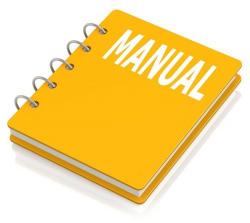Acura RSX 2002-2006 Workshop Repair & Service Manual
Catalog:
Model:
Complete digital official shop manual contains service, maintenance, and troubleshooting information for the Acura RSX 2002-2006. Diagnostic and repair procedures are covered in great detail to repair, maintain, rebuild, refurbish or restore your vehicle like a professional mechanic in local service/repair workshop. This cost-effective quality manual is 100% complete and intact as should be without any missing pages. It is the same factory shop manual used by dealers that guaranteed to be fully functional to save your precious time.
This manual for Acura RSX 2002-2006is divided into different sections. Each section covers a specific component or system and, in addition to the standard service procedures, includes disassembling, inspecting, and assembling instructions. A table of contents is placed at the beginning of each section. Pages are easily found by category, and each page is expandable for great detail. It is in the cross-platform PDF document format so that it works like a charm on all kinds of devices. You do not need to be skilled with a computer to use the manual.
'02-'03.pdf 1,495 pages
“’02-'06.pdf” 2,019 pages
TABLE OF CONTENTS
General Info
Specifications
Maintenance
Engine
Engine Electrical
Cooling
Fuel and Emissions
Transaxle
Steering
Suspension
Brakes (Including ABS)
Body
Heating, Ventilation and Air Conditioning
Body Electrical
Restraints
…
EXCERPT:
General Information
Special Tools
Specifications
Maintenance
Engine
Cooling
Fuel and Emissions
Transaxle
Steering
Suspension
Brakes
Body
Heater and Air Conditioner
Electrical (Including SRS)
Radiator Test
1. Wait until the engine is cool, then carefully remove
the radiator cap and fill the radiator with engine coolant to the top of the filler neck.
2. Attach the pressure tester (A) (commercially available) to the radiator.
3. Apply a pressure of 93 123 kPa (0.95 1.25 kgf/cm , 14 18 psi).
4. Inspect for engine coolant leaks and a drop in pressure.
5. Remove the tester, and reinstall the radiator cap.
6. Check for engine oil in the coolant and/or coolant in the engine oil.
Rectifier Test Alternator Brush Inspection
Alternator Brush Length
Standard (New): 10.5 mm(0.41 in.)
Service Limit: 1.5 mm(0.06 in.)
Rotor Slip Ring test
Check for continuity in each direction, between the B terminal and P terminals, and between the E terminal and P terminals of each diode pair.
All diodes should have continuity in only one direction. Because the rectifier diodes are designed to allow current to pass in one direction, and the rectifier is made up of eight diodes (four pairs), you must test each diode in both directions for continuity with an ohmmeter that has diode checking capability: a total of 16 checks.
Rocker Arm Assembly Installation
1. Reassemble the rocker arm assembly (see page 6-36).
2. Clean and dry the No. 5 rocker shaft holder mating surface.
3. Apply liquid gasket, P/N 08717-0004, 08718-0001, 08718-0002, 08718-0003, or 08718-0009 evenly to the cylinder head mating surface of the No. 5 rocker shaft holder.
NOTE: Do not install components if too much time has passed after applying the liquid gasket (for P/N 08718-0002, no more than 4 minutes, for all others, no more than 5 minutes). Instead, remove the old residue and reapply the liquid gasket.
After torquing, tighten all cylinder head bolts in two steps (90° per step). If you are using a new cylinder head bolt, tighten the bolt an extra 90°.
NOTE: Remove the cylinder head bolt if you tightened it beyond the specified angle, and go back to step 5 of the procedure. Do not loosen it back to the specified angle.
...
General Information
-2002 Model
-2003 Model
Special Tools
Specifications
Maintenance
Engine
Cooling
Fuel and Emissions
Transaxle
Steering
Suspension
Brakes
Body
Heater and Air Conditioner
Electrical (Including SRS)
Starter Circuit Troubleshooting (continued)
6. Check the following items in the order listed until you find the open circuit.
*Check the BLK/WHT wire and connectors between the under-dash fuse/relay box and the ignition switch, and between the under-dash fuse/relay box and the starter.
*Check the ignition switch (see page 22-93)
*Check the transmission range switch and connector (A/T) or the clutch interlock switch and connector (M/T).
*Check the starter cut relay.
*Check the BLK wire between the clutch interlock switch and G101(A/T) or G402(M/T).
7. Check the cranking voltage and current draw.
8. Check the engine speed while cranking the engine.





